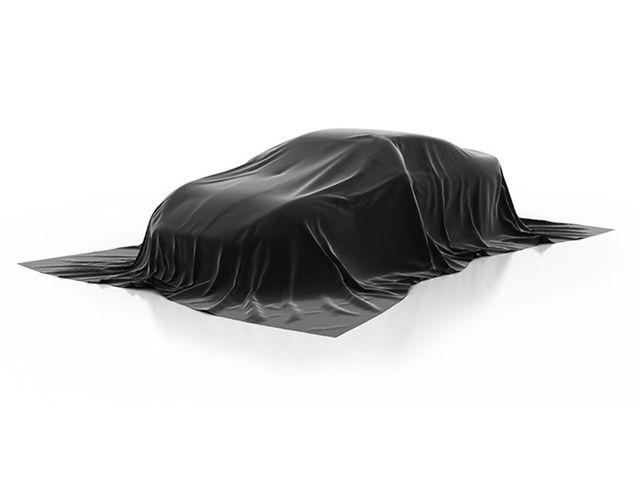REVIEWS AND RATINGS
What others are saying
REVIEW AND TEST DRIVE
2024 Honda Prologue Review and Test Drive
Honda's new electric SUV is a Chevy-flavored taste of things to come.
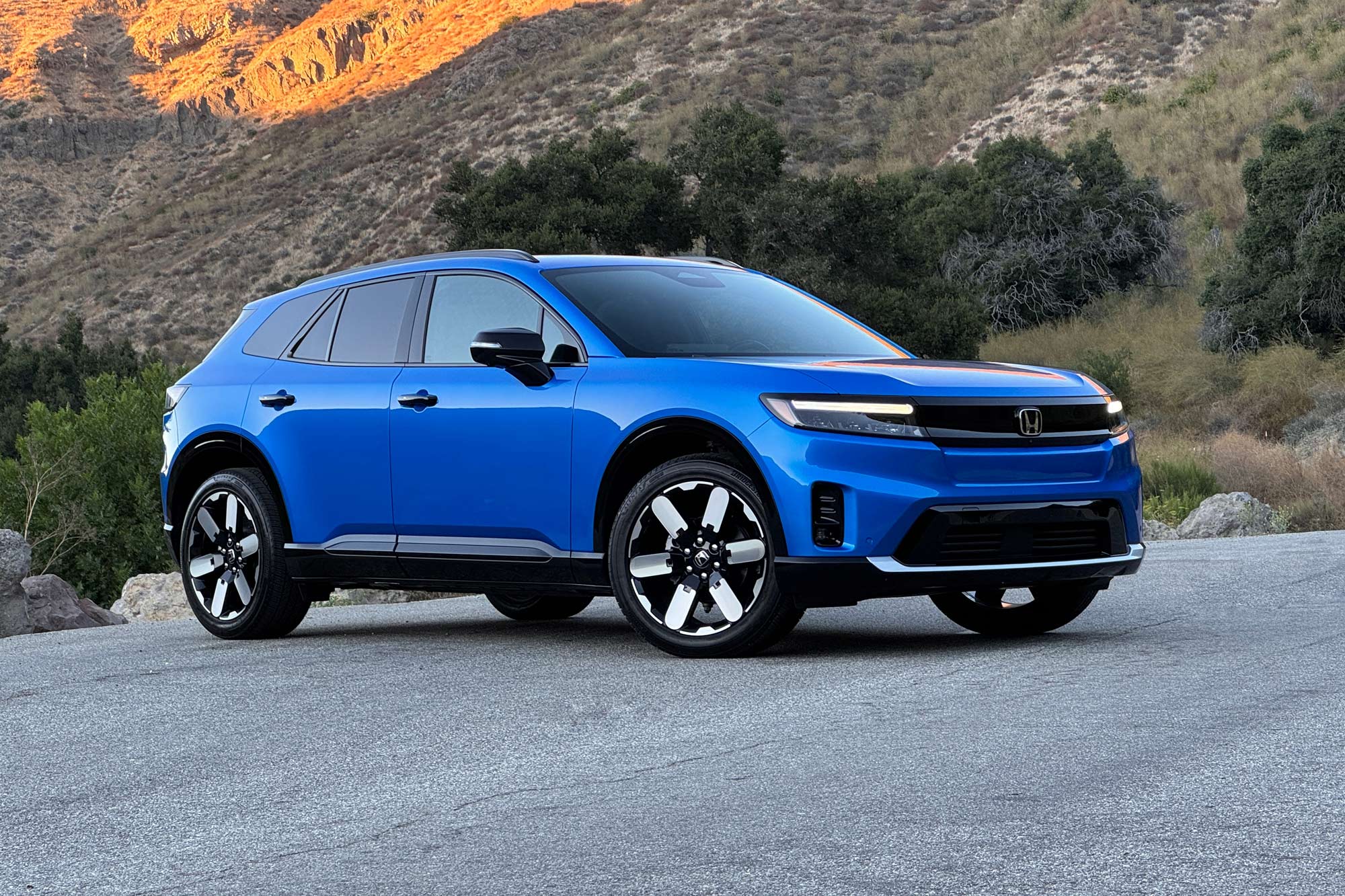 Christian Wardlaw
Christian Wardlaw
Thirty years later, history repeats itself with the 2024 Honda Prologue. Once again running late, this time to the electric-vehicle (EV) party, Honda partnered with General Motors to develop the 2024 Prologue. Perhaps learning from the past, Honda penned distinctive exterior styling to set the Prologue apart from similar GM EVs, but I'm unconvinced that the tactic works. After all, owners will spend all their time inside the Prologue, where the partnership is most visible.
The Prologue is a five-passenger electric crossover SUV available in EX, Touring, and Elite trim levels. Honda offers a single-motor front-wheel-drive (FWD) or a dual-motor all-wheel-drive (AWD) layout, the latter providing more power and traction in exchange for driving range and efficiency.
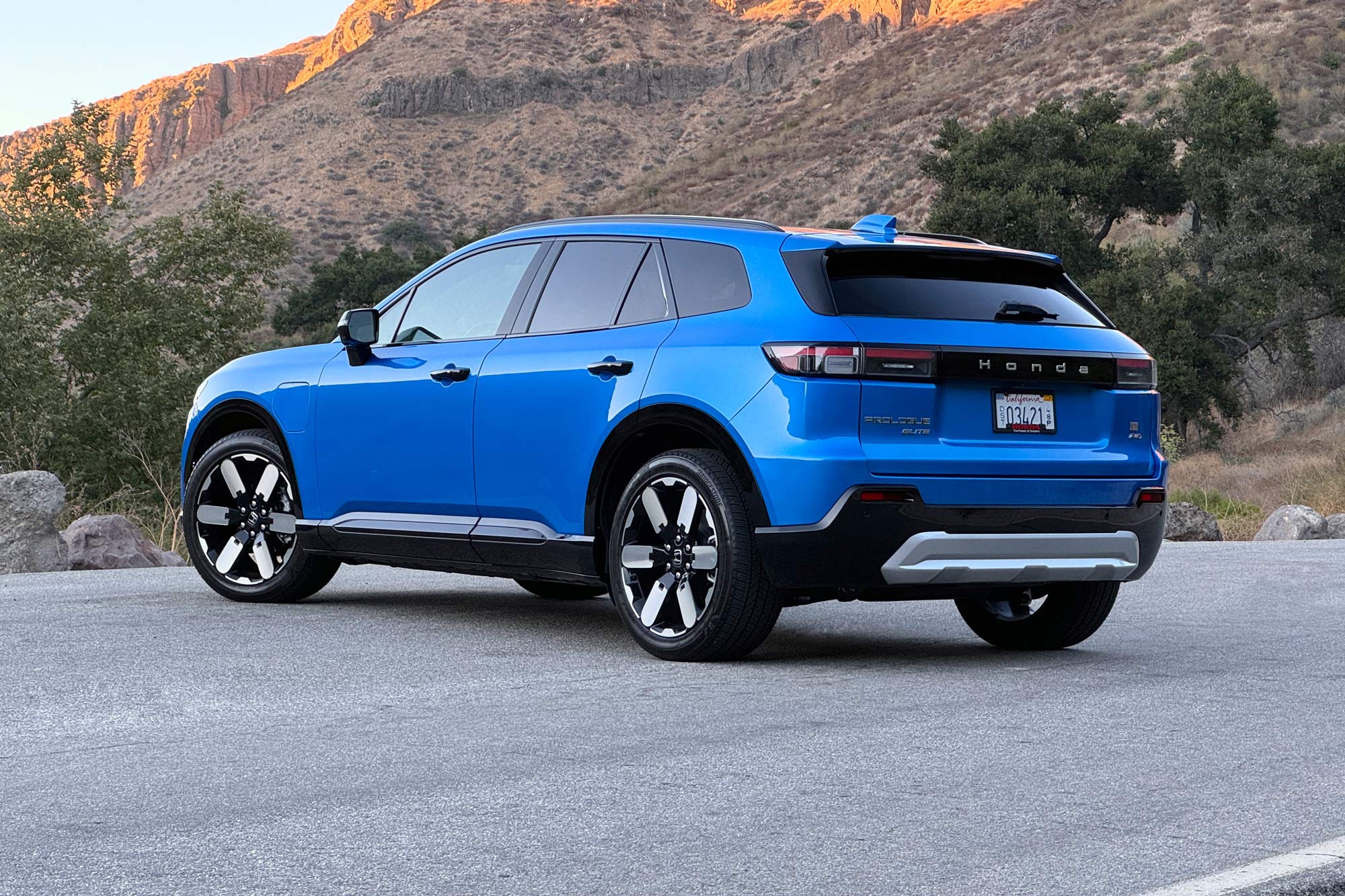 Christian Wardlaw
Christian Wardlaw
Base prices range from the high $40,000s to the high $50,000s, including the destination charge to ship the SUV from the Ramos Arizpe, Mexico, assembly plant to your local dealership. In addition, Honda claims 2024 Prologue models built after February 26, 2024, qualify for a federal tax credit of $7,500, applied to a purchase or a lease.
For this Prologue review, I test-drove the Elite dual-motor AWD in Southern California. Its extra-cost Pacific Blue paint brought the manufacturer's suggested retail price to $59,750, including the $1,395 destination charge. Honda provided the vehicle for this Prologue review.
Is the 2024 Honda Prologue a Good Electric Vehicle?
Except for the exterior styling, nothing about the Prologue reminds me of a Honda. From the substandard quality of the interior to the quizzical execution of specific details, it strikes me as a quick solution to give Honda a presence in a segment that includes excellent alternatives like the Ford Mustang Mach-E, Hyundai Ioniq 5, and Kia EV6. The Prologue isn't a bad EV, but it's not a good Honda.
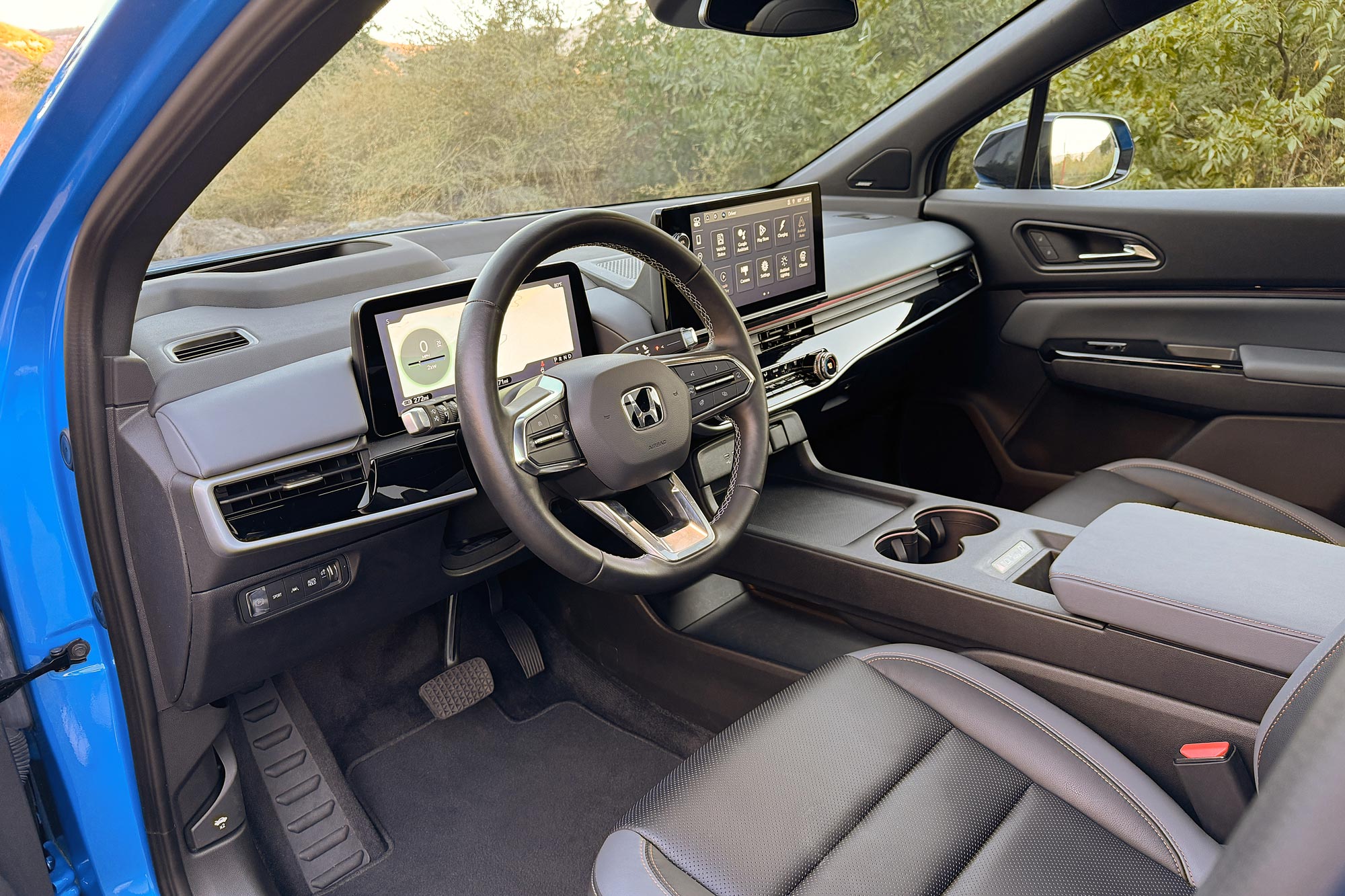 Christian Wardlaw
Christian Wardlaw
An Appealing Design Marred by Undisciplined Execution
Honda says the Prologue's styling is "Neo-Rugged," suggesting it represents a new way to convey strength, toughness, and determination. It's appealing, but when you open the SUV's doors, a decidedly "Neo-Honda" interior awaits.
People familiar with Hondas will wonder why it seems so cheaply detailed. People familiar with GM products will wonder why a Honda looks and smells like a Chevy inside. Everything appears to come from a GM parts bin, from the materials and switchgear to the steering wheel and display screens.
That's unsurprising, considering that Honda builds the Prologue in the same Mexican factory that makes the Chevrolet Blazer EV. But given its distinctive exterior, I didn't expect to find an interior leaning so heavily on GM components.
Unfortunately, in addition to swathes of hard and glossy plastic, the layout is frequently confusing. Need the hazard flashers? The button is on the ceiling next to the Crisis Assist call button, so be careful which one you push. Want to engage the Sport mode? Look down to the left and peer into the dimness for the small button.
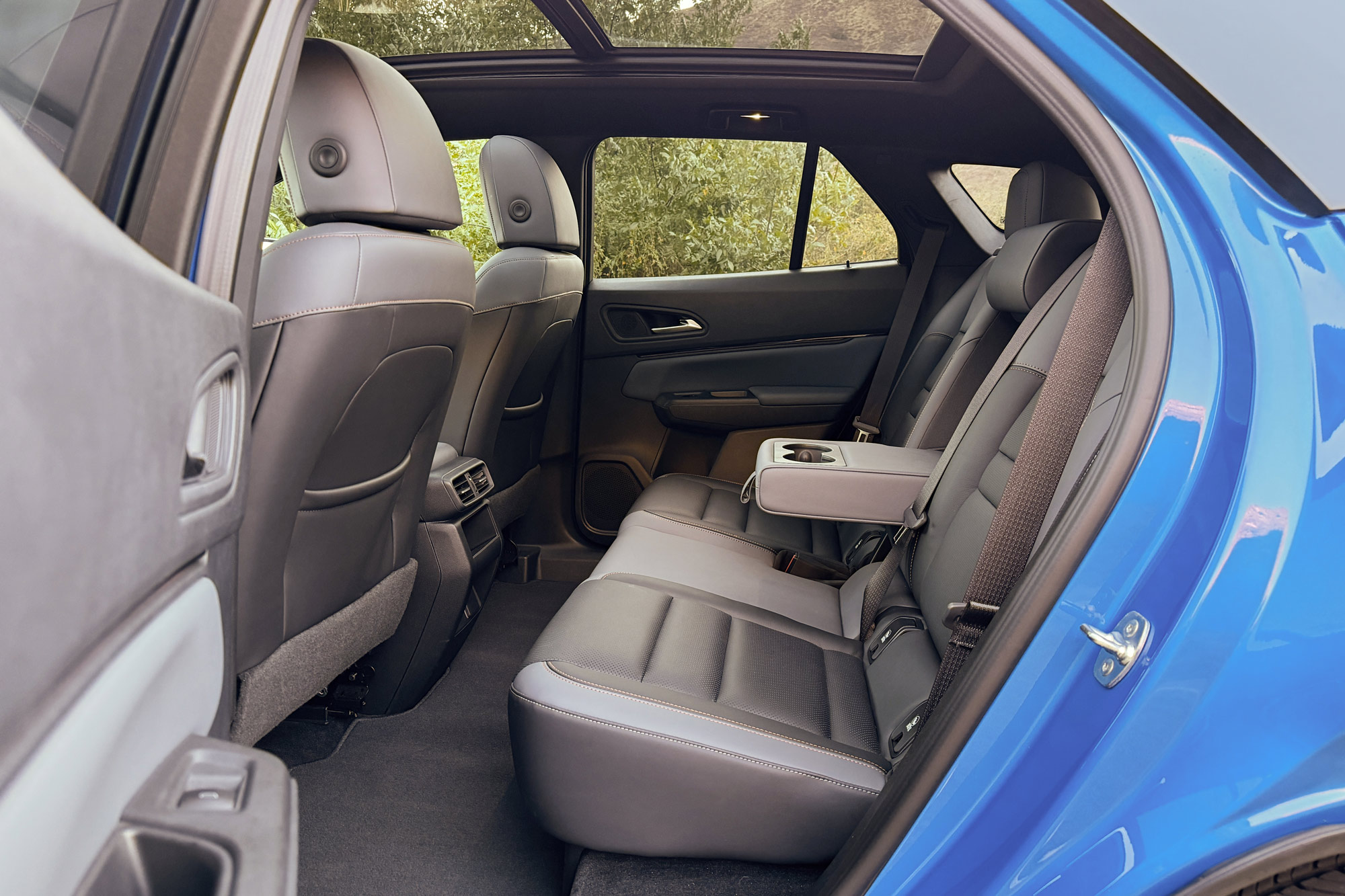 Christian Wardlaw
Christian Wardlaw
Fortunately, the Prologue Elite's leather-wrapped, heated, and ventilated front seats are exceptionally comfortable even after hours on the road, and the heated steering wheel is good to grip during long trips. The back seat is roomier than most electric SUVs in this segment, but it didn't offer proper support, so it wasn't comfortable for me.
One cool thing about EVs is the front trunk (frunk). Alas, the Honda doesn't have one — and neither does the related Blazer EV. Also, while the Prologue looks and feels larger and heavier than many of its rivals, the cargo-volume measurements are unimpressive. The Prologue Touring and Elite offer 23.7 cubic-feet behind the back seat and a maximum of 54.5 cu-ft. The EX is slightly more accommodating because it doesn't have a panoramic sunroof.
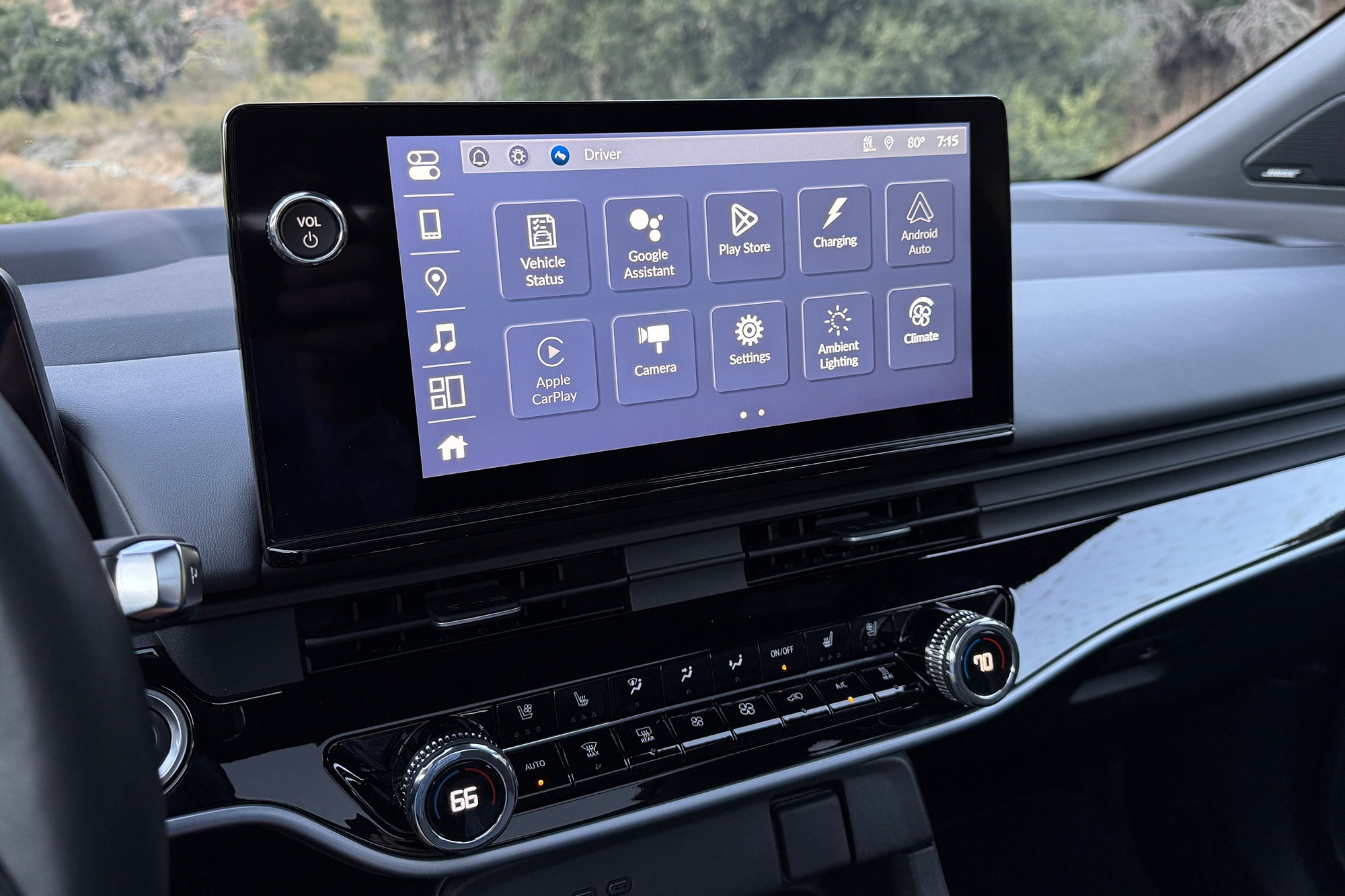 Christian Wardlaw
Christian Wardlaw
Prologue's Technology Is Simple and Practical With Few Flaws
Honda equips the Prologue with an 11.0-inch digital instrumentation panel and an 11.3-inch touchscreen infotainment system, small displays for the segment. Although they're configurable, I had to settle for layouts I didn't like, and they suffer significant surface reflections.
The infotainment system, which features Google built-in, is simple and intuitive to use. Pairing to Bluetooth is effortless, and it's easy to switch between wireless Apple CarPlay or Android Auto and the native system's environment. Likewise, Google Assistant provides fast, accurate responses to voice commands, though it can stumble occasionally. The test vehicle's 12-speaker Bose audio system sounded good, too.
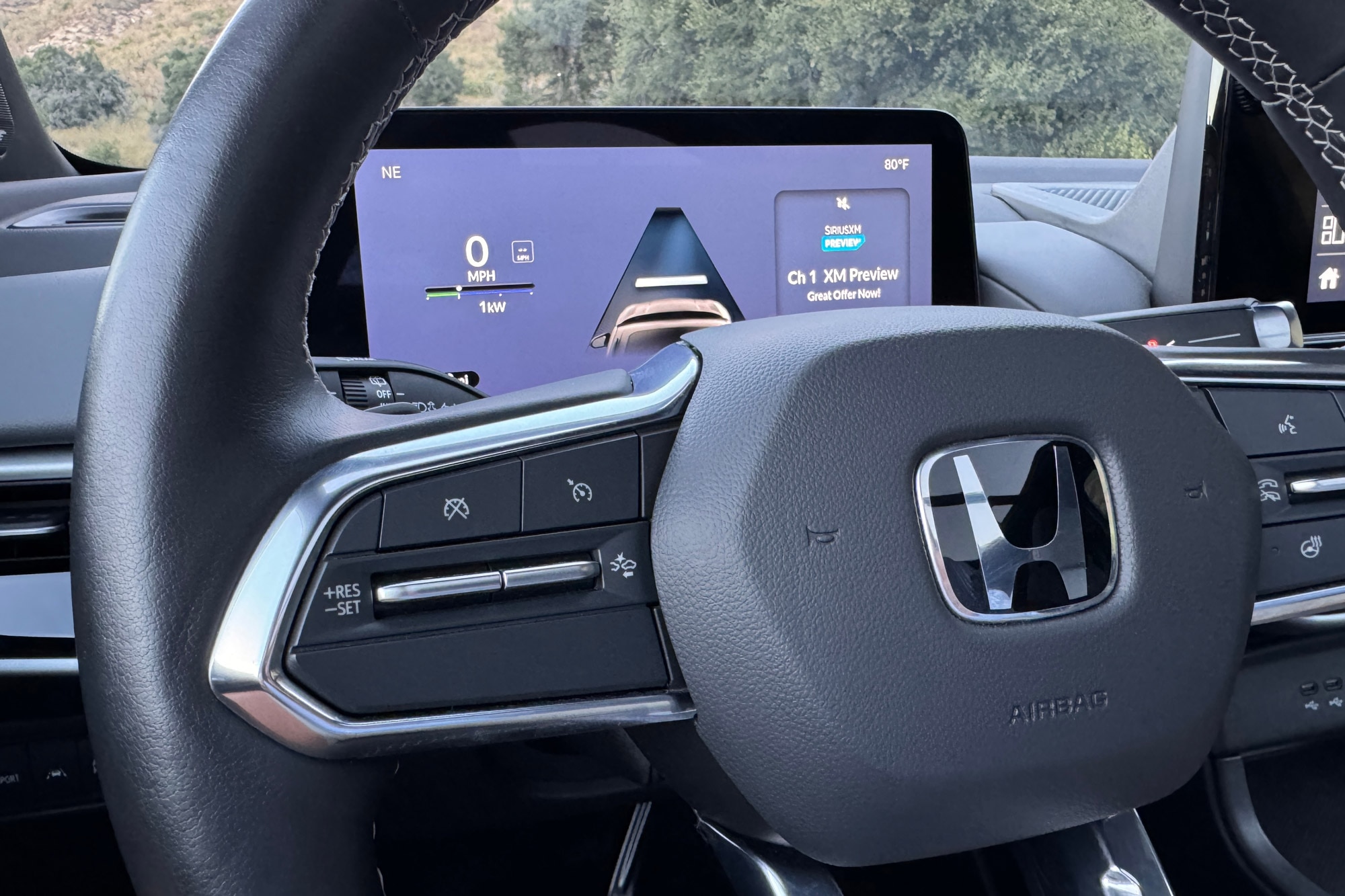 Christian Wardlaw
Christian Wardlaw
Honda Sensing is standard, a collection of driver-assistance systems that equips every Prologue with the expected safety features. Touring trim adds front parking sensors, while the Elite includes a rear pedestrian detection system and a surround-view camera.
The tech works as intended, but I found the reverse automatic braking system to be too sensitive. No matter how slow I went, I could not back the Prologue out of my angled driveway because it kept slamming on its brakes, thinking the street was an obstacle. That happens in many test vehicles, but the Prologue was the worst offender to date. I had to turn this feature off for the weeklong test.
With Elite trim, the Prologue has a simple head-up display. I'd swap that feature for a digital rearview camera, which this SUV desperately needs to improve rear visibility — a feature on some new cars that replaces a traditional rearview mirror with a rear-facing camera view. Unfortunately, you can't get one.
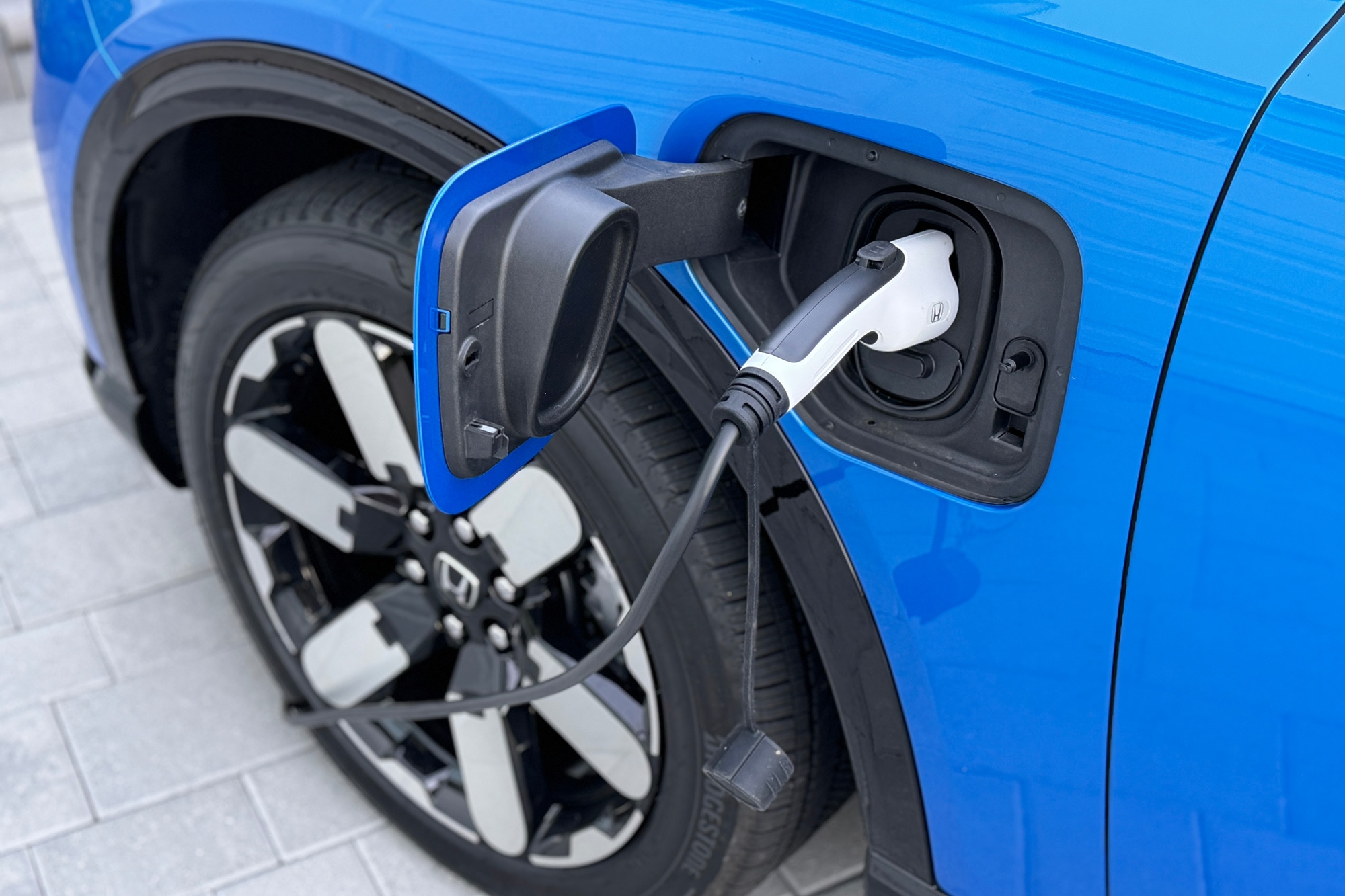 Christian Wardlaw
Christian Wardlaw
Typical EV Dynamics Lack Honda's Traditional Zing
Honda equips the Prologue EX and Touring with a single-motor FWD electric drive system supplying 212 horsepower and 236 pound-feet of torque. A dual-motor AWD setup is optional for those trims and standard with the Prologue Elite, delivering 288 horsepower and 333 lb-ft. An 85-kilowatt-hour battery is estimated to provide between 273 and 296 miles of range, depending on the configuration.
Compatible with 150-kilowatt DC fast chargers, the Prologue can add up to 65 miles of range in 10 minutes or recharge from 20% to 80% capacity in 35 minutes. According to Honda, using a Level 2 charger, like a home charging station, the EV adds 34.1 miles of range each hour.
I trickle-charged the EV using a standard household outlet on my porch and had no trouble keeping it charged up (but not topped off) during a week of driving. Keep in mind that I work from home. In addition, I eventually would have needed to visit a public charging station had I driven it for more than a week.
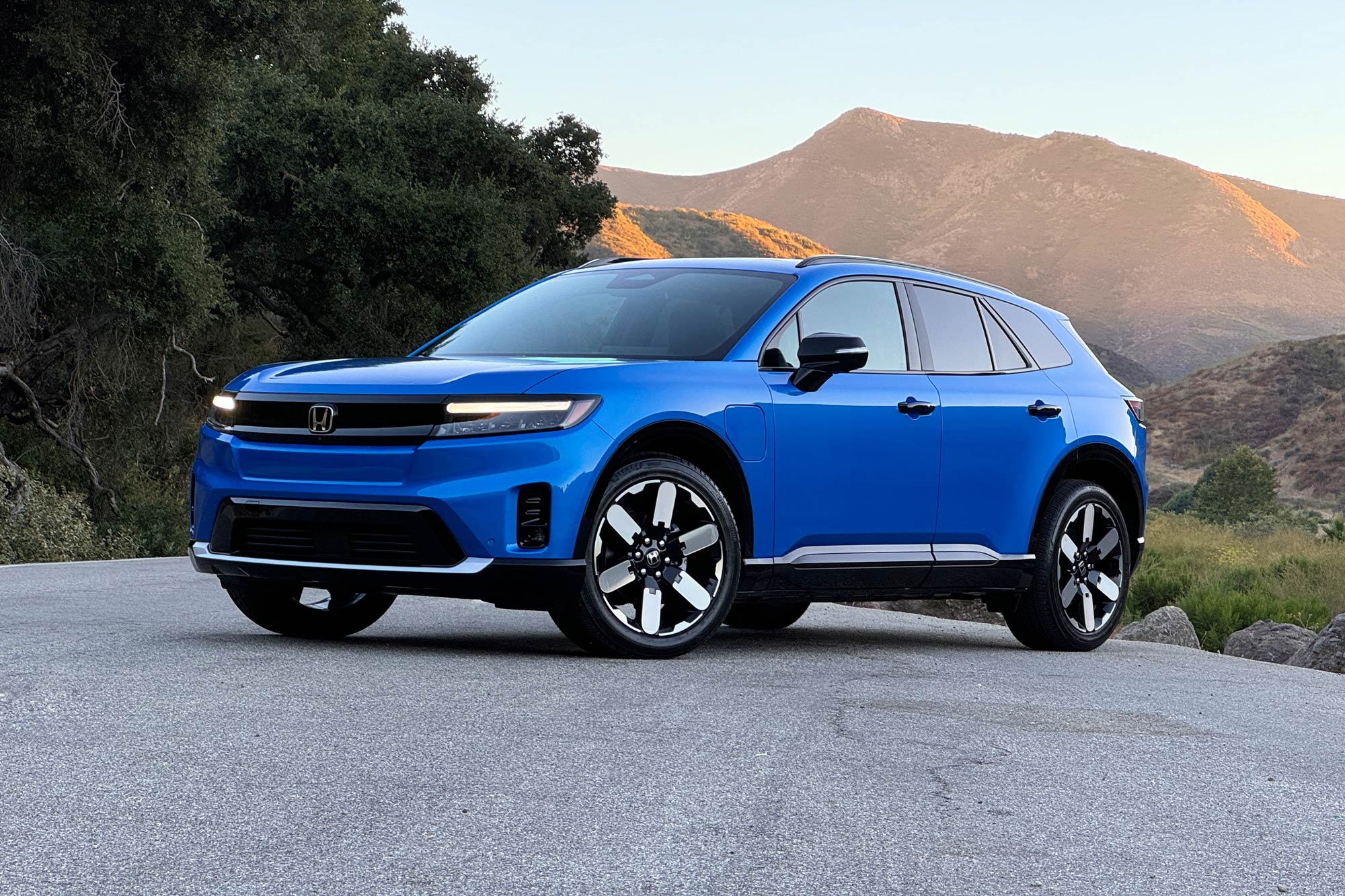 Christian Wardlaw
Christian Wardlaw
Despite having the dual-motor drive system, the Prologue Elite is quick to accelerate but not as fast as many of its rivals. That's fine, though, because the Prologue isn't engaging to drive like most Hondas. It can feel heavy, clunky, and unrefined from behind the steering wheel.
Much of that sensation is due to the suspension, which produces a firm, sometimes choppy ride as it suppresses unwanted lateral, vertical, and fore/aft body motions on undulating pavement. Still, I prefer the Prologue's rapid response to bumps and dips to the bouncing and wallowing frequently evident in softer-tuned EVs.
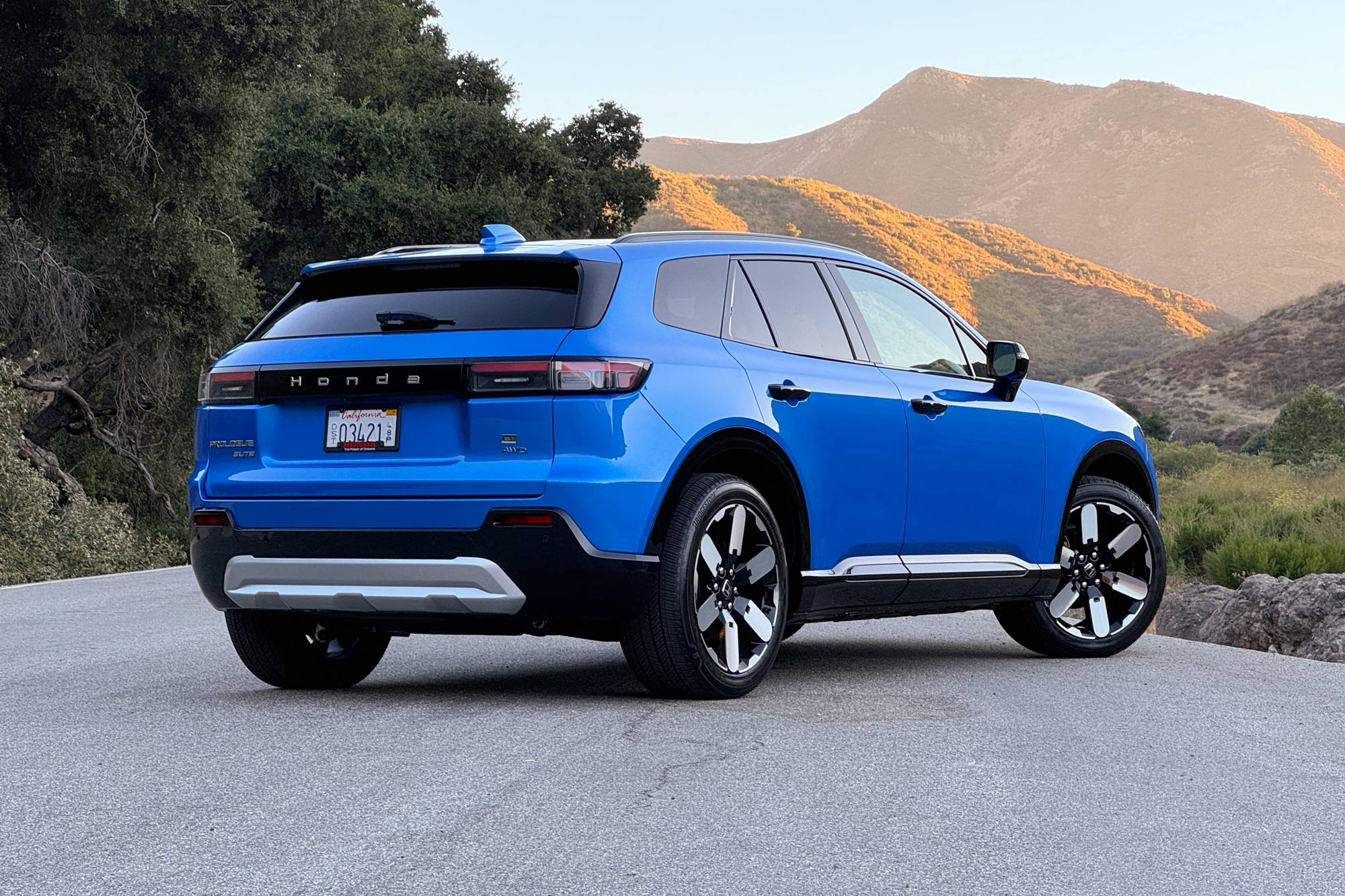 Christian Wardlaw
Christian Wardlaw
In town, the Prologue displays significant structural integrity and is unfazed by speed bumps and speed humps. I also liked the fluid and smooth steering, which weights up the farther you turn the wheel and offers a resolute on-center feel when driving on the highway.
Several regenerative-braking modes are available using the steering wheel paddle. You can engage a one-pedal driving function, but it slows down aggressively. Until you acclimate to its responsiveness, be careful with this feature if other motorists are following close behind the Prologue.
On a mountainous 94.6-mile evaluation loop, the battery dropped from 276 miles of estimated range to 168 and averaged 2.7 miles per kilowatt-hour. That translates to 37 kWh/100 miles, the official EPA efficiency rating for a dual-motor Prologue.
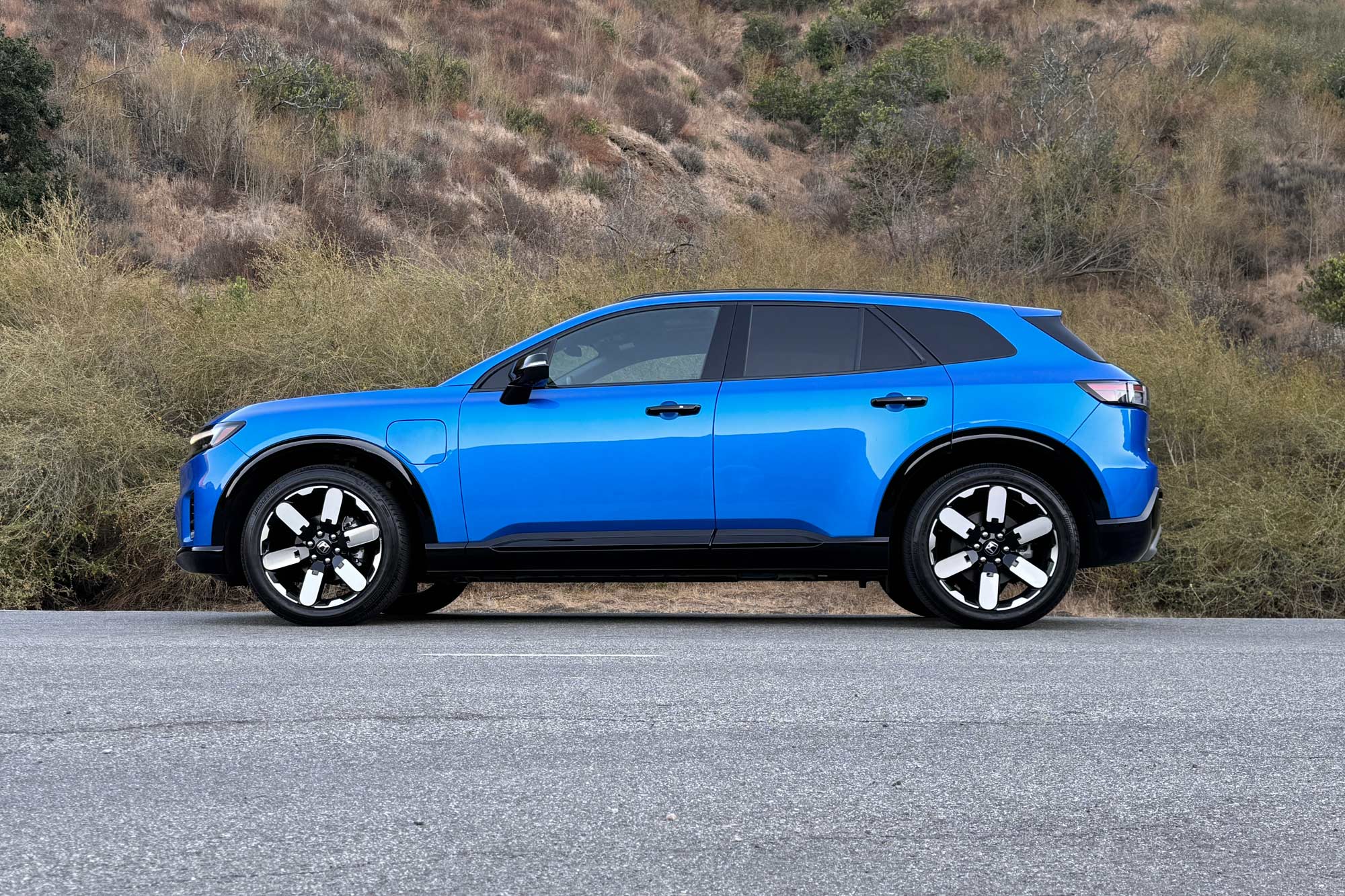 Christian Wardlaw
Christian Wardlaw
Honda chose an appropriate name for the 2024 Prologue. As the automaker prepares a proprietary electric-vehicle platform for future production models, the Prologue will lead to new Honda EVs that are Hondas to the core of their DNA. Fortunately, just as the Isuzu Rodeo was a good SUV in its day, GM's Ultium platform and component set are competitive. That makes the Prologue a good EV, even if it's not a good Honda.
Written by humans.
Edited by humans.
 Christian Wardlaw
Christian WardlawChris says his first word was "car." For as long as he can remember, he's been obsessed with them. The design. The engineering. The performance. And the purpose. He is a car enthusiast who loves to drive, but is most passionate about the cars, trucks, and SUVs that people actually buy. He began his career as the editor-in-chief of Edmunds.com in the 1990s, and for more than 30 years has created automotive content for CarGurus, J.D. Power, Kelley Blue Book, the New York Daily News, and others. Chris owns Speedy Daddy Media, has been contributing to Capital One Auto Navigator since 2019, and lives in California with his wife, kids, dog, and 2004 Mazdaspeed Miata.
